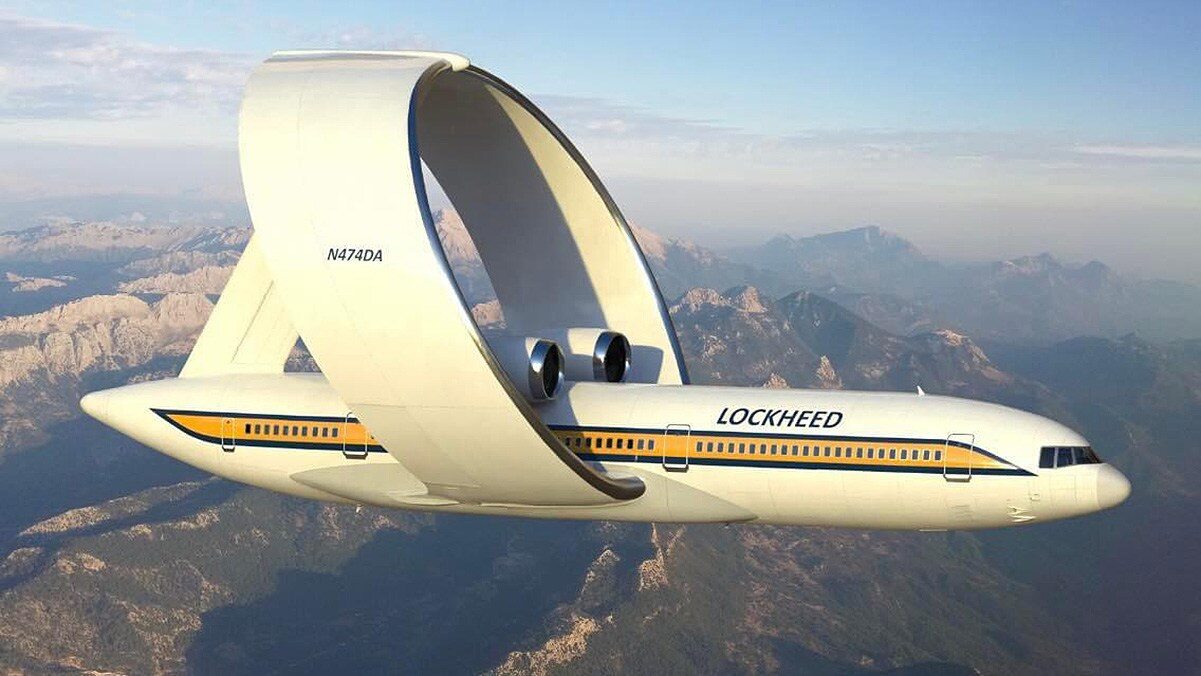This plane has wheel-shaped wings. An unusual prototype from Lockheed

Can such a plane fly? Most aircraft look very similar, but the American company Lockheed once experimented with an unusual prototype with a ring instead of wings. How it’s working?
Although all commercial aircraft today look painfully similar, that doesn’t mean that engineers haven’t experimented with some rather unconventional inventions. However, even the characteristic Concorde is similar to the prototype developed by Lockheed.
Ring wing plane – the Lockheed prototype still amazes
Employees of a well-known American company prepared the concept in the 1980s. What attracts attention is, of course, the appearance of the machine. The unusual shape consists of a quite classic fuselage, but this is almost the only similarity with passenger planes used today.
The two wings of the machine, with a span of over 50 meters, are bent in the shape of a circle, and the rear vertical stabilizer has transformed into a huge support set at an angle of 27 degrees, connecting the two halves. The position of the engines has also changed, they are placed in the center of the ring and above the hull. The entire wheel structure is over 20 meters high.
The machine doesn’t look like this just to stand out from the crowd. While it looks stunning, the invention was fully capable of being airborne and flying. It may be surprising, but the idea of using wheels or rings instead of wings was already considered by aviation pioneers. The first experimental models of flying machines from France used two rings located at the front and rear of the structure.
Moreover, this type of solution in jet aircraft can be even more effective than conventional wings.
A plane with ring wings is better than others?
As it turns out, the ring arrangement itself offers a significant advantage in terms of aerodynamics. The characteristic wheel generates much greater lifting force compared to the classic pair of wings on the sides. In addition, the prototype was much more resistant to side winds.
Greater force means that the machine also uses less fuel during flight. This was the goal that Lockheed engineers had in mind from the very beginning. The ring was intended to be a fuel-saving solution, especially on short commercial flights.
These are not all the advantages. Although the structure was higher, it also had a smaller space footprint. The reduced width enabled the use of narrower runways at airports.
Unfortunately, the theory ended because the prototype never made experimental flights in real conditions. The ring system excessively intensified the phenomenon of the so-called parasitic air resistance. This defect virtually wiped out the fuel savings achieved by the design.
Additionally, producing wheel-winged planes would be extremely expensive. The factories are adapted to the production of classic, flat wings. The new model needed strong semicircles bent into precise shapes. These difficulties sealed the fate of Lockheed’s ring plane.






